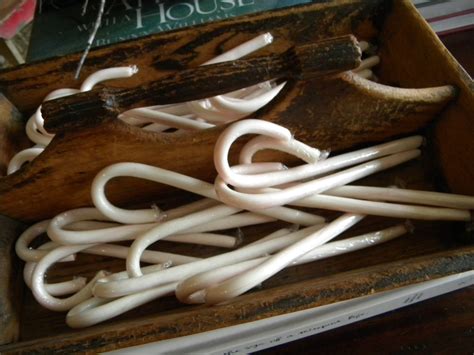The Candy Cane
The candy cane is one of the nation’s favorite candy during the holidays. Believe it or not, the classic peppermint candy goes back to the 17th century. The original candy cane came from Germany. Nowadays, candy canes are known for their shape, but the original candy cane wasn’t a cane at all. It was a straight, hard candy. Not only was it a peppermint stick, but the original color of the candy cane was plain white. In 1670, a choirmaster at the Cologne Cathedral in Germany bent the candies into the shape of sh epherds’ crooks to pacify young singers. They later earned their red strips in the 1900’s, making the candy cane more appealing, and thus, more popular. Candy canes were made from a thick taffy. The taffy was manually mixed and shaped by hand. As soon as the hot taffy was put into its stick form, workers had to manually bend the top to make its now famous shape. In 1957, the Diocese of Little Rock patented its invention, the Keller Machine, which made the candy cane making process a lot less harmful to workers.
epherds’ crooks to pacify young singers. They later earned their red strips in the 1900’s, making the candy cane more appealing, and thus, more popular. Candy canes were made from a thick taffy. The taffy was manually mixed and shaped by hand. As soon as the hot taffy was put into its stick form, workers had to manually bend the top to make its now famous shape. In 1957, the Diocese of Little Rock patented its invention, the Keller Machine, which made the candy cane making process a lot less harmful to workers.
Although the candy cane is known for its peppermint flavor, every year companies such as The Hershey Company and the Frankford Company come out with flavors other than the original mint flavor. The flavors of the candy canes range from popular candies like the original Sweet-Tart™ to soda flavors like Dr. Pepper™. Not only can you find candy and soda-flavored candy canes, but there are also savory options. The Archie Mcphee Company makes savory candy canes with flavors like wasabi, gravy, dill pickle, mac n’ cheese and bacon. These strange flavors are far off from the original peppermint, but who’s to say they’re bad?
Whether you’re enjoying a classic candy cane or a fruity flavored one, may your taste buds be delighted.
Your donation will support the student journalists of Blake High School. Your contribution will allow us to purchase equipment and cover our annual website hosting costs.













